Table of Contents
HOW TO REPLACE THE TRACKS OF A BULLDOZER?
Track chain replacement is important. To replace any element of the undercarriage, it is necessary to remove the track, even if it is required to replace it, or when maintenance and repairs are carried out on the undercarriage. To extract the tracks, the type of master link must be known. There are two types of master links on bulldozers: split master link and master pin link.
RELEASE TRACK TENSION.
To remove the tracks, it is necessary to lift the equipment. Place a hydraulic jack at the rear of the
equipment and raise the rear, you can help the excavator boom to lift it from the ground. Then lay down plywood or mats to prevent damage to the floor and keep the pieces clean. Use the track tensioner to loosen the tracks; this facilitates the removal of the tracks. Tension is released by manually retracting the track adjuster or loosening the adjuster screw.
MASTER PIN LINK
Subsequently, remove the side cover that is located approximately midway between the two to gain access to the tightening nut of the idler wheel. Use a wrench to loosen the idler adjusting nut. Locate the position of the master pins, to the naked eye they are slightly different from the rest of the chain pins, use a bolt remover. The master pin can be recognized as it has a locking device or a drilled hole at one end that allows it to be distinguished from other pins in the chain. Move the equipment back slowly or, on some models, forward to bring the kingpin just below drawbar level. Place a block under the grouser on a shoe that allows the kingpin to center on the front pulley wheel. With the kingpin centered on the front idler pulley, remove any locking devices.
There are several options to remove the master pin, you can use a portable press to remove the pins that join the two sides of the master pin, another option is to heat the area and with the help of a hammer and a drilling plate give it a blow, the The last option is to cut the link with a blowtorch (if a replacement is being carried out, it will have to be welded later).
Then locate the tensioner pulley adjuster, sometimes it may be protected with a cover, loosen the pulley adjuster. Depending on the size of the machine, a winch, crane, forklift, or loader with accessories may be required to do the heavy lifting. Remove the front of the tracks and place them next to the front of the landing gear. If you have raised the whole machine, run it in reverse; this will stack the track near the rear of the machine. Use the same method for the other track. Then use a forklift to remove the tracks from the machine.
SPLIT MASTER LINK
The master link is made up of two interlocking pieces. One piece is attached to one end of the tracks and the other piece is attached to the other end of the tracks. Separate the two pieces. You may need to hit the links with a hammer to loosen them. Now the tracks are no longer connected in a circle. Remove the tracks by pulling the lower track in the direction of the rear of the machine.
NOTE
The tracks are heavy, and it will most likely be very difficult for you to remove them by hand (especially on larger machines). Contractors who do not have a machine that does this job will chain the tracks to a vehicle and then “pull” the tracks off the machine. After removing the tracks, always make sure the machine is always locked in such a way that it is secure while repairs are being made. Whenever a track is removed, thoroughly inspect the track frame components for excessive wear and misalignment. Removal, disassembly, and replacement vary by model and manufacturer. Consult the manufacturer’s service manual for exact procedures.
TRACK REPLACEMENT
To replace the tracks, remove the machine from the table and place it on the new tracks so that the drive sprocket fits correctly with the rail. Continue backing up until the team is just ahead of the back end of the track. Next, put a bar on the track and help the track climb over the sprocket, carrier rollers, and idler pulley as the tractor moves forward. When the track comes together, install the kingpin and any locking devices. Once the track is together, adjust the track tension using the manufacturer’s recommended procedures.
ADVICE
TRACK ROLLERS & IDLERS
- It is not advisable to mix new rollers with some already used on the same side since an overload can occur in the new ones, when the new rollers are in operation, they will settle more than the old ones due to a wear factor, which generates that carry a much greater weight.
- If not all the lower rollers are replaced with new ones, it is advisable to place the worn but still useful rollers on one side and all the new rollers on the other side, this allows the pressure to be produced on each one of the rollers is proportional without producing an individual overload.
- As a precaution, it is recommended that during the first 100 hours of replacement of rollers and idlers not to travel long distances continuously, it is necessary to make frequent stops of the machine to avoid overheating and jamming. Make stops every 4-5 minutes and drive in the opposite direction to ensure oil circulation.
GROUPED CHAINS
- It can be generated by the working conditions, especially in the case that they are carried out in humid areas, or also because the machine is seated, without movement, for long periods, which generates moisture to enter causing the seals to seize, one possible solution is to remove the track pins, re-grease, and push in. Causing controlled vibrations can also help loosen it.
TRACK SHOES
- To have adequate flotation, it is recommended to use the narrowest possible shoe.
- Remember that the contact between the shoes and the chains must be metal-to-metal, since in case of not being fulfilled the penalties will loosen and the shoe could fall, it is always recommended to grind the paint, flakes, or surfaces with oxides so that they are ensure contact between shoe and chain.
CHAINS SLIPPING OFF SPROCKETS
- Excessive sprocket wear could cause the chains to slip on the sprockets.
- In the case that the chains and sprockets are new, the problem could be caused by the spring of the track adjuster being in bad condition, which causes it to retract, and the tension is not adequate, that is, it is loose.
- In some cases, the sprocket will only fit in one direction, it could be incorrectly positioned.
- The chains may have a wrong pitch with the sprockets or vice versa.
COMMON PROBLEMS IN UNDERCARRIAGE
Under normal conditions the wear that occurs on the track links is on the surface that contacts the rollers
and idlers.
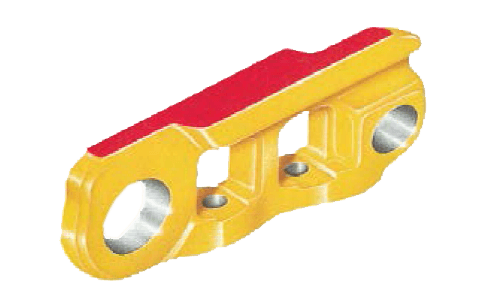
There are several cases that generate problems in the elements, which are mentioned below:
EXCESSIVE WEAR OF THE SIDE RAIL
- There are several types of factors that cause general wear, among which are operating conditions, uneven terrain or sharp turns, this type of wear is more common when there is a misalignment in the track, an excessive serpentine of the chain or that the chains are are very worn.
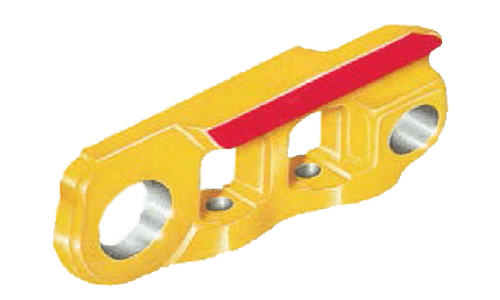
INDENTATIONS ON INTERNAL RAIL SURFACE
- This problem has several causes, among which are the inclination of the terrain, misalignment of the sprockets and bent chains, which causes the teeth of the sprocket to collide and rub against the inside of the link. You could fix this problem by checking the alignment and adjusting the chain tension.
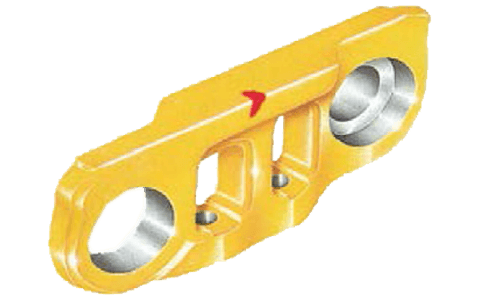
MASTER PIN SIDE WEAR
- It is generated due to contact with the external flange of the rollers, if it occurs before the link is 100% worn, which means that the rollers have exceeded their useful life and require replacement.
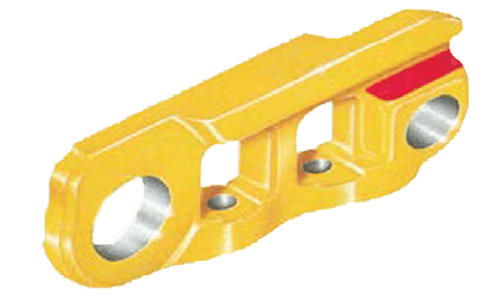
EXCESSIVE FACIAL WEAR
- It is produced by the movement of the links or the operating conditions, to reduce or delay this type of wear it is recommended to use chain protectors or use lubricated chains.
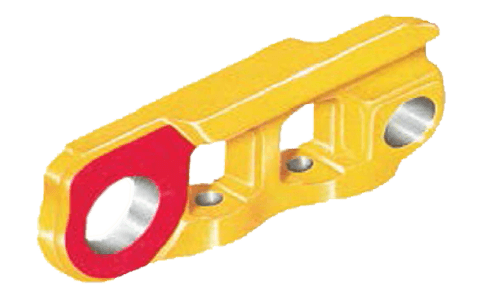
RAIL CORNERS GOUGED
- Among the different causes, the operating conditions such as the type of work to be carried out, the speed of execution, weight and power of the machine stand out, as well as a particular cause that is generated from the shock loads transmitted by the rollers. to the links. A possible solution could be to modify the chain tension and / or reduce the size of the shoe.
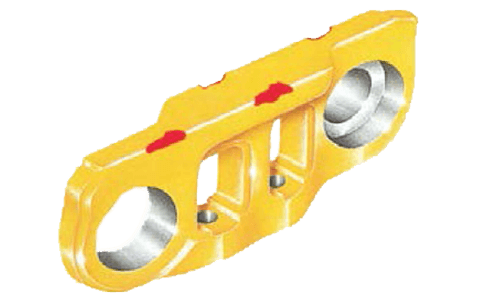
CRACKS OR BREAKS IN THE AREAS WITH GREATER STRESSES
- In most cases, breaks are generated by the torsional stresses that are transmitted to the link structure on occasions when the machine is operating in high impact conditions, this failure can be controlled by using narrower shoes and readjusting the chain tension.
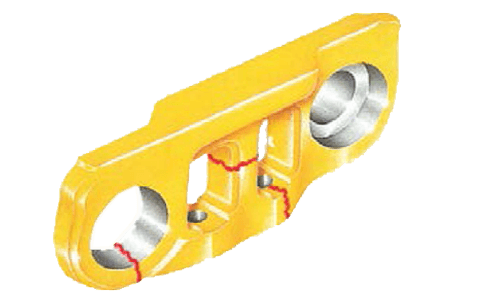
DEFORMATION OF ANTERIOR BUSHING AND PIN
- This problem can be caused in 2 occasions: at the time of assembly or disassembly of the chain or in operation caused by the bending forces in the pins and bushings, this problem can be improved if a smaller shoe is fitted.
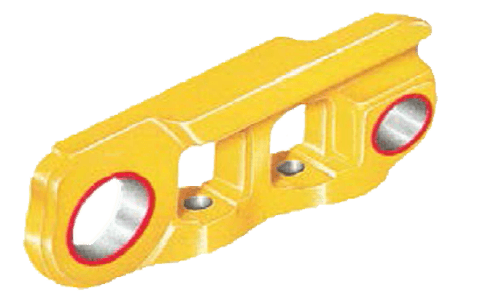
PINS AND BUSHES OF THE TYPE FILLED WITH GREASE
- The chain stretch is used to measure the internal wear suffered by the pins and bushings of greased and sealed chains, it is used by measuring the pins between centers of a set of 4-5 links and a comparison is made with the new specifications of the chain.

WEAR OF PIN FINAL
- There are obvious factors that can cause this type of problem, among which the operation on slopes or uneven terrain stands out. This problem is generated by the incorrect tension of the chains and by excessive wear of the rollers. If the chain is not limited, it is recommended to readjust the tension and turn the rollers.
- If this type of wear appears immediately after the installation of a new undercarriage, the position of the track protectors should be checked not so close to the chain.
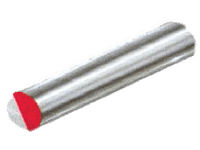
LOOSE PINS
- It must be ruled out that the failure is caused by incorrect assembly or disassembly, in the case of ruling out this case the problem could be caused by bending stress when the equipment is doing heavy work. This problem is solved by replacing the most worn shoes or replacing them, in addition to checking the tightness of the bolts.
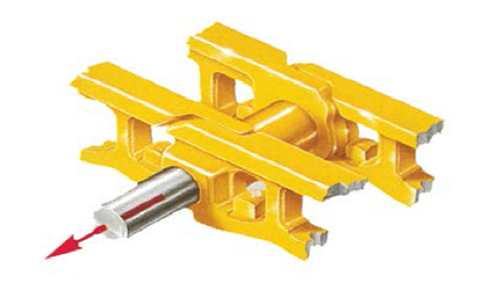
PIN BREAKS
- Breakage occurs when there are extremely strong blows or high static loads, mainly when the work area is rocky, another time is when the material accumulates on the sprocket causing the track chain to suffer extremely high tension. The viable solution is to protect the track chain and sprocket by using shoes with holes.
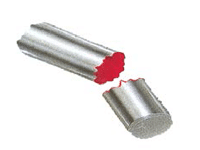
- Common bush wear occurs on the outer surface, this begins to progressively wear evenly, and should be measured in the center of the wear area.
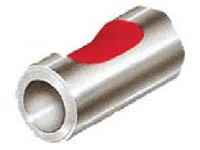
- There are several ways to measure the outer wear, the most common is to evaluate the distance from the bottom of the shoe to the center of the wear area on the bushing, a depth gauge is usually used, or a depth indicator tool can also be used. ultrasonic wear.

PIN SPALLING
- Spalling occurs due to high bending stresses especially in heavy duty work.
- In addition, the working conditions of the machine this type of problem can be generated by an extremely high tension in the chains that is produced by an accumulation of material, one way to solve this problem is by readjusting the chain and protecting it from the accumulation of material, especially rocks, between the chain and the sprocket.
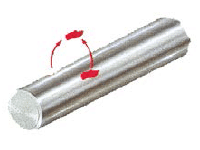
LOWER TRACK ROLLERS
- In this section the most important thing is to know the wear of the roller tread, which is measured as a function of the diameter.
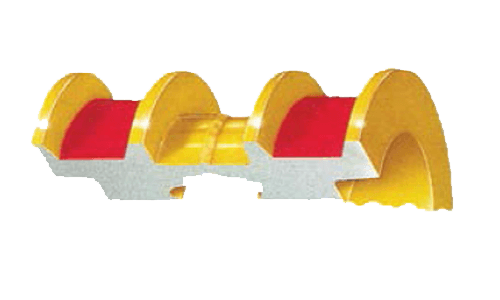
The tool to be used is an external clamp, the measurement required is that of the smallest diameter of the roller raceways, because precisely the one with the smallest diameter will be the one with the greatest wear, however, this measurement It is quite difficult to carry out, so it is sufficient to measure the front and rear rollers because wear occurs between these 2 points due to the machine’s own rolling when it is in operation.
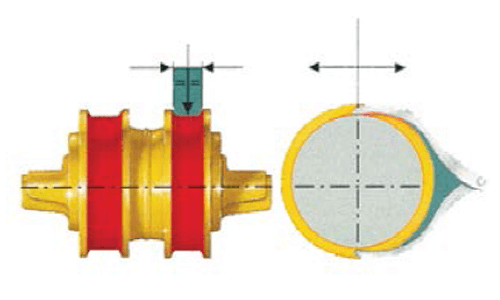
EXCESSIVE WEAR OF THE SIDE FLANGE
- This type of wear is common due to the working conditions of the equipment and could also be caused by misalignment or also because the chain tension is not correct, mainly in these cases it is due to the chain being loose.
- It must be considered that the double flanged rollers have a much longer useful life and be very careful with the sequence of the double and single flanged rollers.
- As a recommendation, if a longer useful life is desired under the same working conditions, more double flange rollers could be installed.

UPPER FLANGE DEFORMATION
It is produced by the contact of the pin or is due to the sliding of the chains on the flanges, due to a meandering movement of the chain. If the chain is not fully worn, adjust the tension, perform a roller alignment, and reattach the guide rails to the track.
TRACK SHOES
In this element the most relevant wear is the relative height of the lug of the claw from the top of the
shoe. A depth gauge is used.
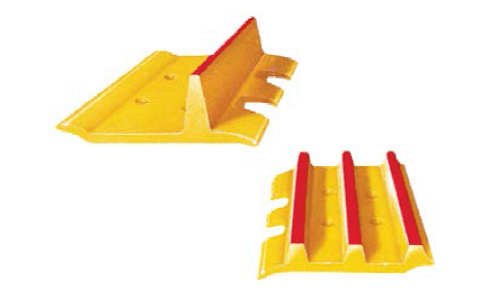
ACCELERATED WEAR OF OVERLAPPING SURFACES
This is usually caused by a chain that is worn out and is resolved by adjusting, generally tightening the chains, or replacing them.
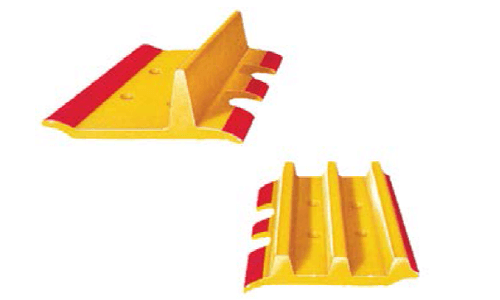
HOLES FOR EXPANDED BOLTS
It is caused by the movement that exists between the shoe and the chain, its cause may be that the bolts are loose or the movement of the machine. There are several solutions among which a reduced shoe size or shoes with less penetration stand out, a control of the torque of the bolt will do.
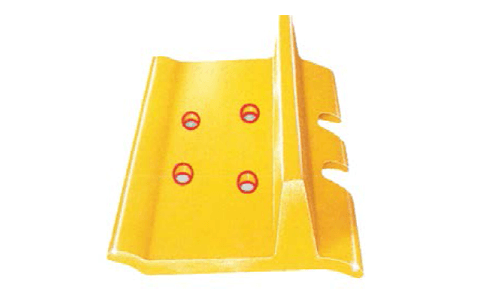





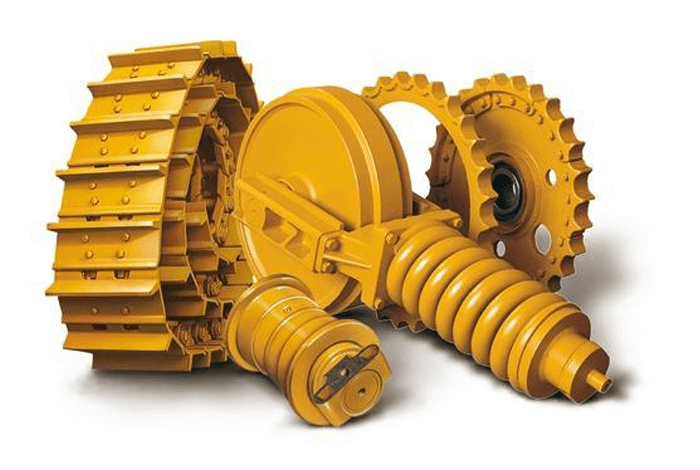
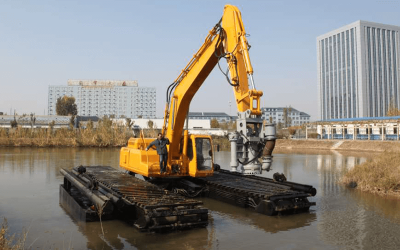
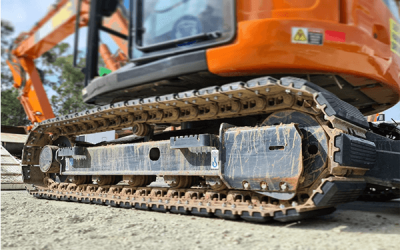
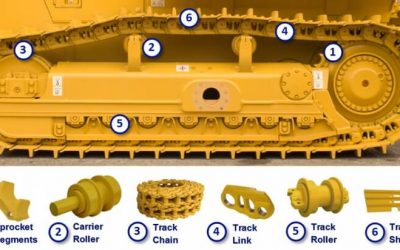
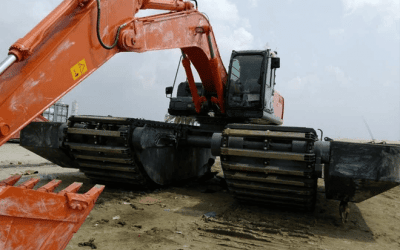
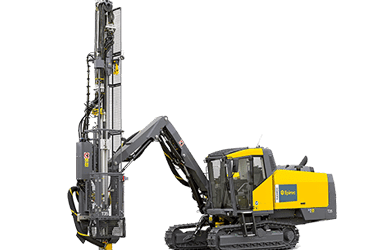
0 Comments